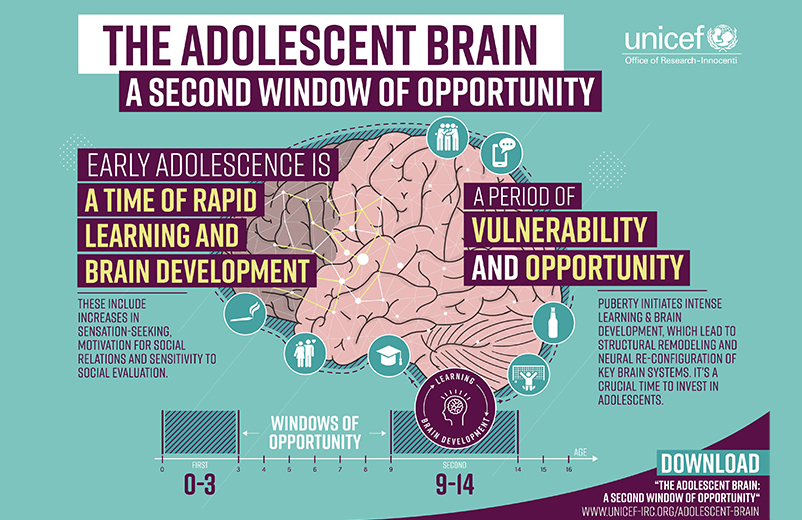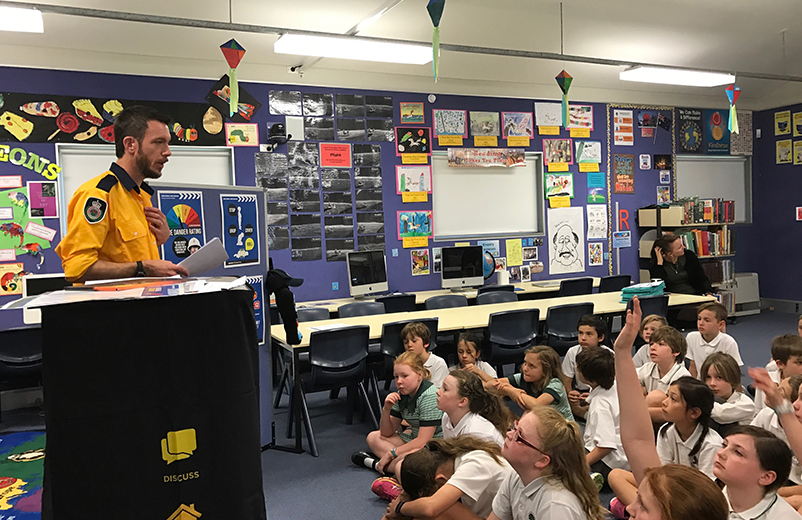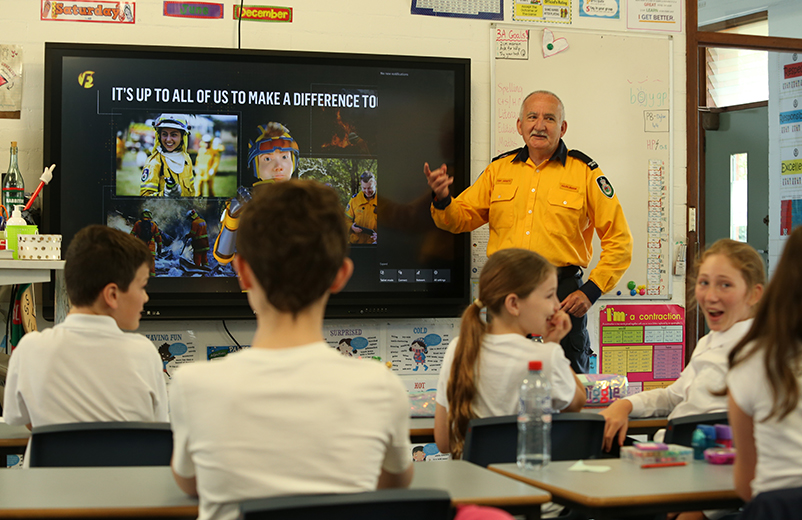Abstract
A Year 5 student at the time of the floods in the Hunter Valley, NSW, in 2007 would now be 25 years old. When Cyclone Yasi devastated central Queensland in 2011, Year 5 students then are now 21 years old. Year 5 students at the time of the 2013 bushfires in NSW are now 19. This paper proposes that engaging with children about natural hazard risk around them presents opportunities to mainstream disaster risk reduction.
Introduction
Emergency services and other organisations work diligently to refine programs and resources that focus on influencing adult behaviour around appreciating natural hazard risks and providing capabilities to do something about it. As emergency services agencies grapple with implementing recommendations from inquiries following the 2019–20 Australian summer bushfires, you could be forgiven for thinking that disaster risk management and resilience building is by adults for adults alone. This is not so. Children and youth need to be involved in all aspects of learning about and understanding natural hazards and disaster risks. Children and youth are not passive recipients of adult direction when exposed to natural hazards events.
Have you ever paused to think about how different communities would be if more time was spent influencing 10-year-olds about natural hazards and risk and supporting them to live safely in their local environmental context?
The brain of a 10-year-old is highly plastic and can easily develop new neural pathways, unlearn unhelpful pathways and prioritise neural networks that are helpful. By the time the brain fully matures at age 25, we continue to learn throughout life but not in the same way the ‘adaptive neural sponge’ of a 10-year-old does. Their brains geared for learning and their influence on adults and their choices and behaviours in situations including bushfire preparation is much more than we often credit. The 2020 report, Children and Young People’s Experience of Disaster1 says:
We all say that children and young people are resilient and our future leaders, but this report demonstrates that they are leaders now, and that they have strong thoughts and feelings about how they can support and guide us through disasters.
There is a tremendous opportunity to mainstream disaster risk reduction through genuine participation and involvement of children in matters that affect them and classrooms are the ideal place to do that. This article describes just one approach to do this: through teacher and student collaborations with volunteer firefighter ‘expert partners’. The principles of this approach are adaptable and transferable to any hazard setting.

The brain of a 10-year-old is highly plastic and can easily develop new neural pathways, unlearn unhelpful pathways and prioritise neural networks that are helpful. Image: UNICEF Office of Research-Innicenti, at www.unicef-irc.org/article/1750-the-adolescent-brain-a-second-window-of-opportunity.html.
Resilience education
The Sendai Framework for Disaster Risk Reduction 2015–20302 states that disaster risk reduction is:
...the concept and practice of reducing disaster risks through systematic efforts to analyse and manage the causal factors of disasters, including through reduced exposure to hazards, lessened vulnerability of people and property, wise management of land and the environment, and improved preparedness for adverse events.
The Sendai Framework also states that:
...children and youth are agents of change and should be given the space and modalities to contribute to disaster risk reduction, in accordance with legislation, national practice and educational curricula.2
Disaster resilience education can build student understanding of the hazards and provide knowledge and skills to enable them to contribute to planning, preparation, response and recovery.3 Emergency management organisations, including the NSW Rural Fire Service (NSW RFS), build programs to foster disaster-resilient populations that are able to recognise current and future risk, reduce and manage those risks and be better able to recover from disasters.4
Both the Australian Curriculum and NSW Geography Syllabus K-12 provide the mechanisms for young people to learn about the concepts of disaster risk reduction. Both documents are under review during 2020–21 but currently include hazard and risk components that increase preparedness of learners and can positively affect entire communities. Using critical and creative thinking through geography, students explain and understand the complex world in which they live.
Irrespective of their proximity of their school to a bushfire hazard, around 60,000 NSW students each year across more than 1,500 primary schools study the real-world problem of how bushfire affects people, places and the environment. This presents a unique opportunity for fire experts to work with educators and young students on authentic and local problem-based and inquiry-learning activities.
Natural hazard programs and resources complete with lesson plans and outlines have a long history of being developed by agencies, many without educator input and certainly without input from young people. It is time to leave those programs and resources on the shelf and foster environments of collaborative learning with educational leaders, teachers and their students. This will deliver important expert support and advice as needed in the context of specific local hazards, problems and issues.
Firefighters contributing to student learning
Educating students about hazards and risks can be challenging for teachers, particularly after major events such as the 2019–20 summer bushfires or, more recently, floods in NSW and Queensland. For some children, these events will be traumatic and the expertise of class teachers to support student wellbeing is essential. While some teachers think that educating children about hazards and risk will cause harm, this is unlikely to be the case. Educating children about hazards and disaster risks, and what can be done to manage them, contributes to children’s capability to deal with these events in the future.
Contemporary issues about bushfires can be catalysts for valuable teaching and learning in years 5 and 6 (Stage 3) where students focus on real-life and authentic local problems related to bushfire.5 Examples are the widespread effects of the 2019–20 summer bushfires, the recovery of individuals and communities, environmental damage or the influence of climate change on the frequency and severity of bushfires (and other hazards) across the country.

Firefighters are most effective when they spend more time either in conversation with the school leadership and teachers or in classrooms. Image: Warrimoo Public School
Teachers can work with expert partners such as volunteer firefighters for the purpose of aiding and enhancing student learning. With a sophisticated understanding of how students in years 5 and 6 learn, firefighter experts can make an important contribution to young people’s knowledge and understanding of bushfires that will stand them in good stead as they become adults of the future.
How a school addresses the curriculum and syllabus requirements for the years 5 and 6 bushfire unit of study will vary from place to place. Whether for reasons of school interests or foci, teacher confidence, understanding of natural hazards or the local context, any support to be provided by agencies must respect those reasons or circumstances. Teachers own their classroom. Teachers know their students’ needs and talents.
My experience as an ‘expert partner’ tells me that there are common characteristics of substantial and successful collaborations that deliver enhanced educational and disaster resilience outcomes for students. These include:
- collaborating with school leadership and classroom teachers when the bushfire unit of study is being planned to set the driving inquiry questions and explore classroom and student resources
- delivering an overview or introductory session about natural hazards, risk and bushfire at the start of the unit to set the scene and provide context for deeper learning
- interacting with every student and student groups at a point during the unit when they are working on projects; feedback, support and advice from experts is critical as the local problems are being researched and solutions developed
- joining with peers, families and the school community at the end of the unit when the years 5 and 6 students showcase their projects and their learnings to develop positive connections with schools, families and the community and support students to thrive.
I advocate that all volunteer firefighters go beyond just turning up at a school with a standard hour-long presentation and providing entertainment to students via the fire truck and playing with hoses. The expert partner approach outlined here relies on spending more time either in conversation with the school leadership and teachers or in classrooms. This approach is led by teacher practice and student needs rather than agency programs or documentation. This pathway to more informed, useful and valuable engagement and starts with asking teachers and students: How can I help with learning about natural hazards and risks?
Practice-based evidence
Before retirement in July 2020, I was in the Community Engagement team at NSW Rural Fire Service where I had responsibility for developing the Project Firestorm resource as one aspect of my focus on children and young people. I am a volunteer firefighter at Hazelbrook Brigade in the Blue Mountains of NSW, having been so since 1980. Over 40 years, I have been an accidental ‘expert partner’ at schools on numerous occasions. I expect many volunteers in agencies and organisations have asked: Did my time spent doing this, with them, make any difference at all?
This has been the catalyst for me as I commence data collection as part of a PhD through Central Queensland University. This research, titled, ‘Agency expert partners supporting bushfire disaster resilience education for Primary School students: A case study in New South Wales, Australia’, will investigate and understand further the contribution that volunteers have and their impact on students’ understanding and interest in bushfire risk through the Stage 3 bushfire unit of study.
Leading educational practice for Stage 3 sets out a key inquiry question to drive the inquiry-based geography activity. With authentic local problems to consider, students have the incentive to develop workable solutions that can contribute to their own safety and that of their families and local communities. Bringing in volunteer firefighter experts to the classroom with local field experience can enrich student learning with authentic guidance on those real-world problems.
Two case schools were chosen to study that had a history of successful collaborations with the NSW Rural Fire Service about bushfire safety across years K-6, and particularly with Stage 3. In both schools, local volunteer firefighters have been invited into classrooms as authentic expert partners to support teacher-led student learning. They delivered syllabus and disaster resilience education outcomes by sharing personal stories, physical and emotional experiences as well as providing information, facts and data via geographical tools. This guided students to examine problems as well as reflect on and refine solutions.
This research will collect data from first-hand sources of teachers, students, NSW RFS experts and parents and carers using semi-structured interviews, classroom observations and focus groups. Research participants are expected to be 8 classroom teachers, 40 Year 5 and Year 6 students, 5 NSW RFS volunteer firefighters and 15 parents and carers.

Two schools were included in the study that had invited local volunteer firefighters into classrooms as authentic expert partners to support teacher-led student learning. Image: NSW Rural Fire Service
Gaps in practice evidence
There is limited published research on the application of inquiry-learning approaches such as in Stage 3 Geography in the context of teacher-led, curriculum connected, classroom-based resilience education. The extent to which fire agency experts participate as expert partners in the classroom and influence student learning outcomes is not measured and there is little to no understanding of the enablers and barriers to consistent, sustained and quality support from those experts. This research will address these knowledge gaps and will add to the body of knowledge where disaster resilience education and education practice converge. This work will show how experts support effective education outcomes that increases resilience of students and reduces current and future disaster risk.
Most interest in the new knowledge is expected from emergency services organisation, teachers and students. For emergency services organisation, that knowledge will relate to skills and capability development for expert partners supporting classroom teachers. For teachers, the contribution that experts can offer in the classroom will be clearer and particularly directed to the bushfire mitigation unit in Stage 3 Geography. For students, the value of collaboration with firefighter experts will be explained, as will the process for sharing knowledge. Such guidance and considered advice about bushfire will make a difference to young people in their local setting.
Conclusion
Building confidence about natural hazards and risks in teachers and students is extremely important for all communities. Rather than taking an agency-centric program development approach, I advocate for a collaborative and sharing approach that recognises both the variety of teaching methods and local contexts of natural hazard risk. This study will gather the evidence about the contributions firefighters make when it comes to resilience education and the best practices that are being applied to support teachers and students.


